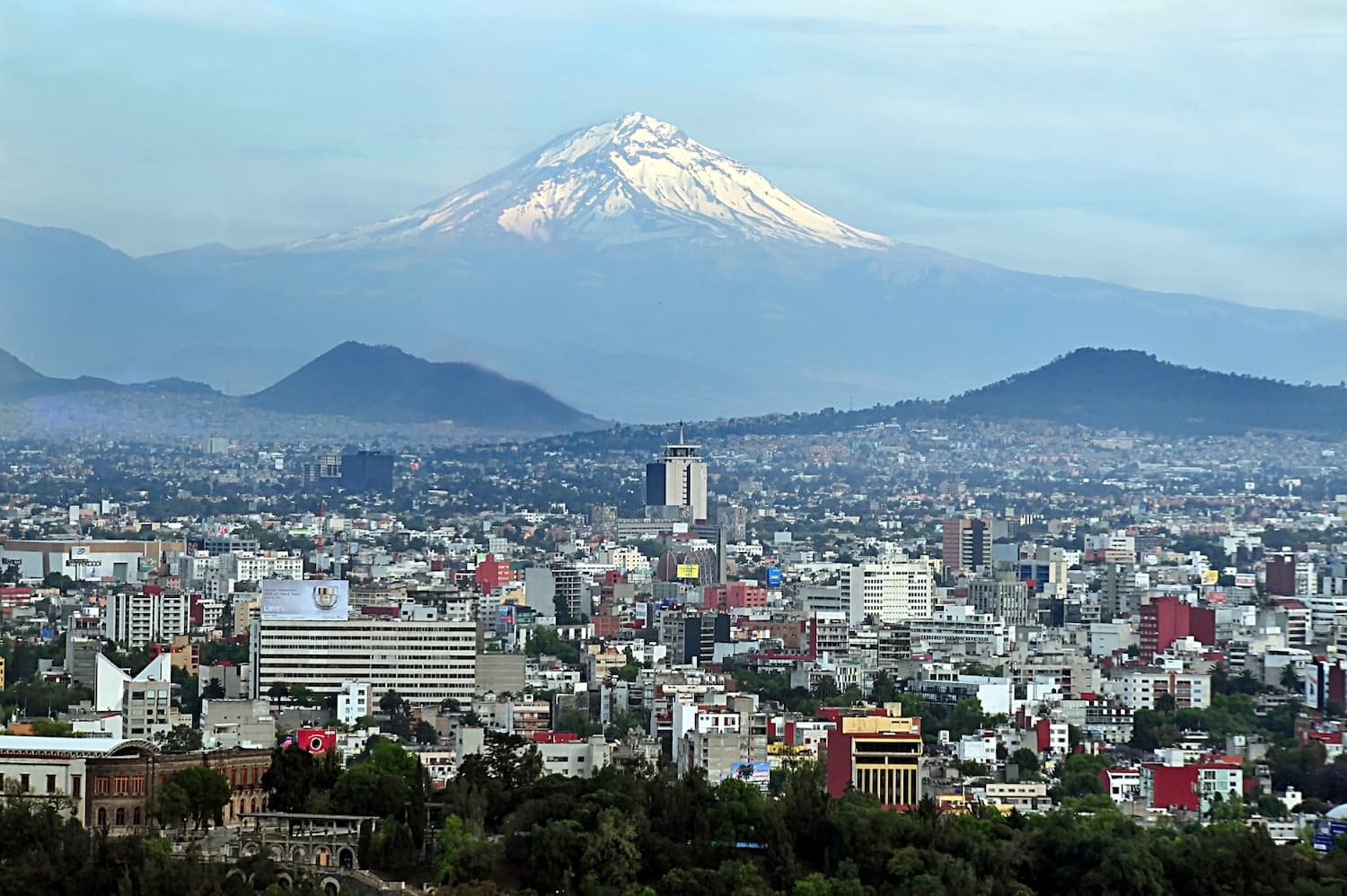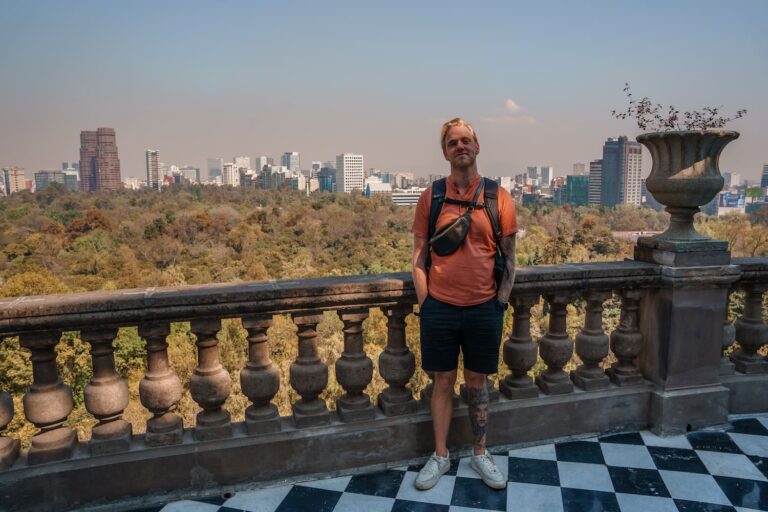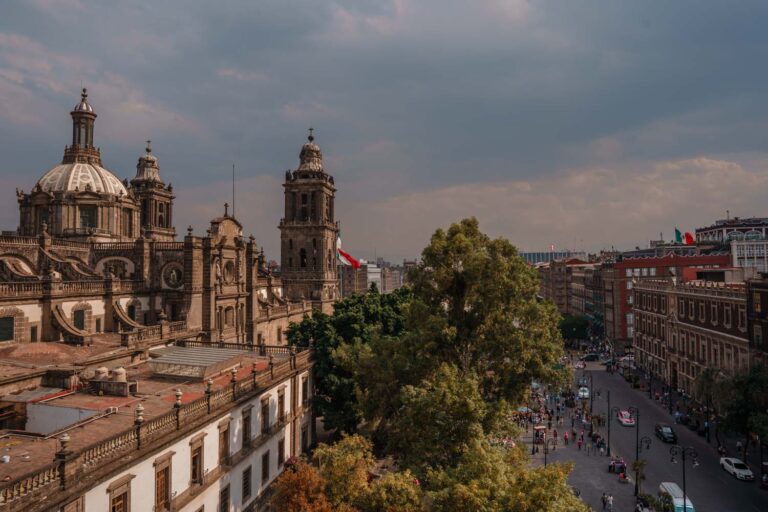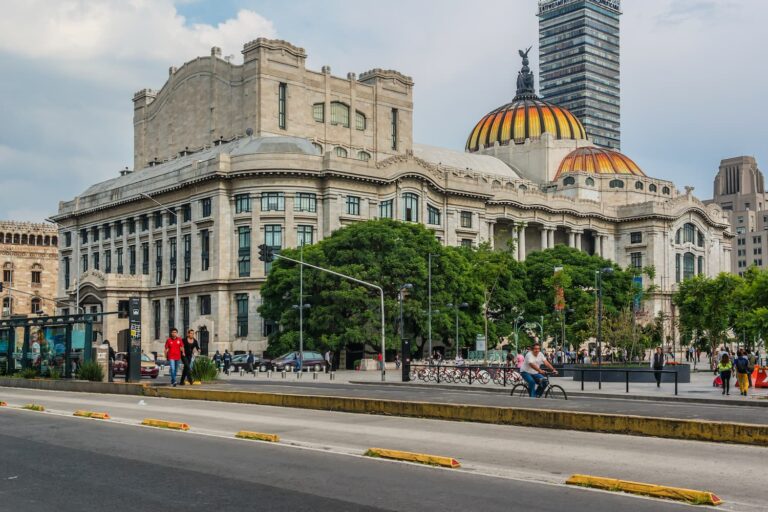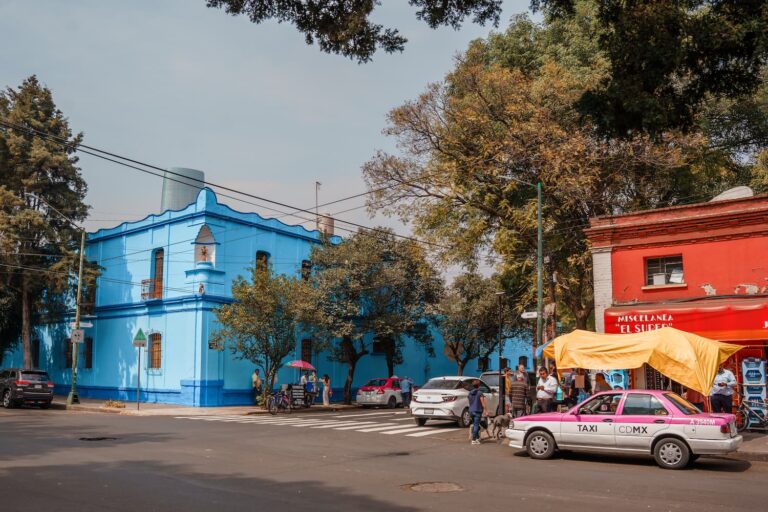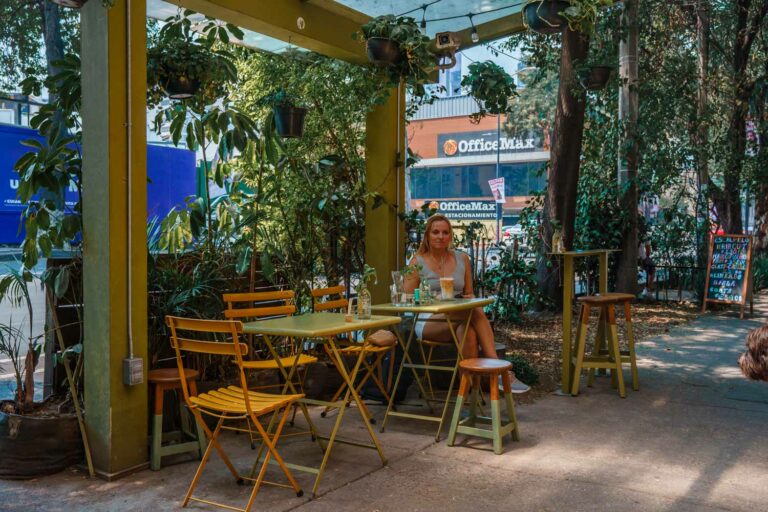Does It Snow In Mexico City?

We are often asked about our travels in Mexico City, and surprisingly, one of the most frequent questions we get is, ‘Does it snow in Mexico City?’
This article will definitively answer that question for you. It will also highlight what winter in Mexico City is like, what you need to think about and prepare for and why we think the winter season is an ideal time to visit Mexico’s capital city.
Furthermore, we will also answer the where does it snow in Mexico question so that if you are unable to see Mexico City snow, you can add other snowy destinations to your Mexico trip itinerary.
Does It Ever Snow In Mexico City?
The short answer to does it snow in Mexico City is yes – but very rarely. Mexico City snow days are a once-in-a-generation event. We have never seen snow in CDMX.
The city may experience an occasional sleet shower in the coldest and wettest winters, but snow rarely settles on the ground. In fact, the last time there was significant snow in Mexico City was over 50 years ago! But there was also snow in December 2022!
So, unfortunately, if you are visiting Mexico to see snow Mexico City is not the place to visit. We have suggestions of where you can visit in Mexico to see snow later in this article.
There are several reasons for the lack of snow.
Firstly, although Mexico City sits at relatively high altitude (ranging between 2,200m / 7,200 ft and 2,600m / 8,500ft), it also sits on a tropical latitude.
As a result, Mexico City never experiences extreme cold or extreme heat. The average annual temperature ranges between 14 C / 57 F and 21 C / 70 F. Even the lower end of these temperatures does not result in the cold, wintry weather conditions necessary for snow.
However, if you really want to see snow in CDMX, the city is surrounded on three sides by mountains and volcanoes, which occasionally experience light snowfall during the winter months.
When Was The Last Snow In Mexico City?
The last time is snowed in CDMX was in December 2022, after 55 years of no snow at all.
The last significant amount of snow in Mexico City fell in *January 1967. An impressive – and incredibly rare – eight inches of snow settled on the ground. (*source The New York Times)
There was also snow in 1940, so in total, CDMX experienced snow only three times.
How Cold Does It Get In Mexico City?
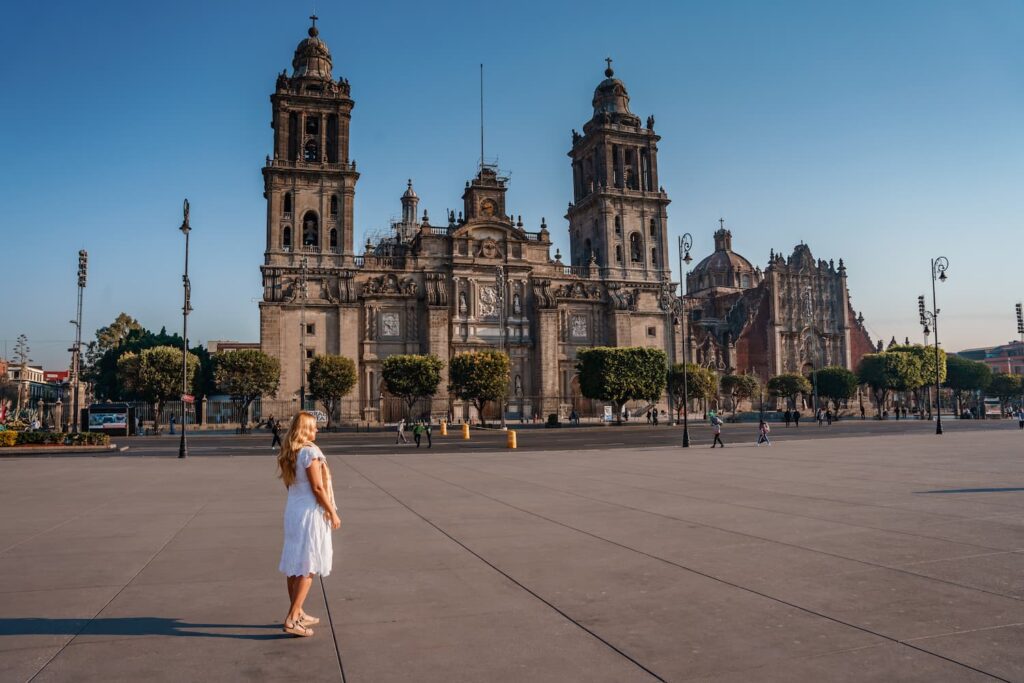
We grew up in Europe, and winter days in Mexico City are not like winter days in Europe. It rarely gets very cold during the day in Mexico City, even in the middle of winter.
The average winter temperatures are a balmy 17 C / 63 F in December, 14 C / 57 F in January and 15 C / 60 F in February. However, daytime temperatures in the capital often reach upwards of 20 C / 68 F, earning it the affectionate title of “the city of eternal spring”.
During our visits, I always wear summer dresses and Robin – shorts and T-shirts under the midday sun. However, as evening descends, the city’s altitude brings a cooler breeze, prompting a switch to jeans and a cosy jacket.
However, although winter days have pleasant temperatures, you can expect nighttime temperatures in winter to fall close to zero.
What Are Winters Like In Mexico City?
The winter season is the coldest season of the year in Mexico, but as previously mentioned, this does not result in snow in Mexico City.
Winter in Mexico City is definitely bearable, especially if you wrap up warm at night.
Also, winter is outside the rainy season, so although days may feel chilly, you can expect consistent days of sunny, blue skies. In fact, it is one of our favourite times of year in Mexico City.
Is Mexico City Nice In The Winter?
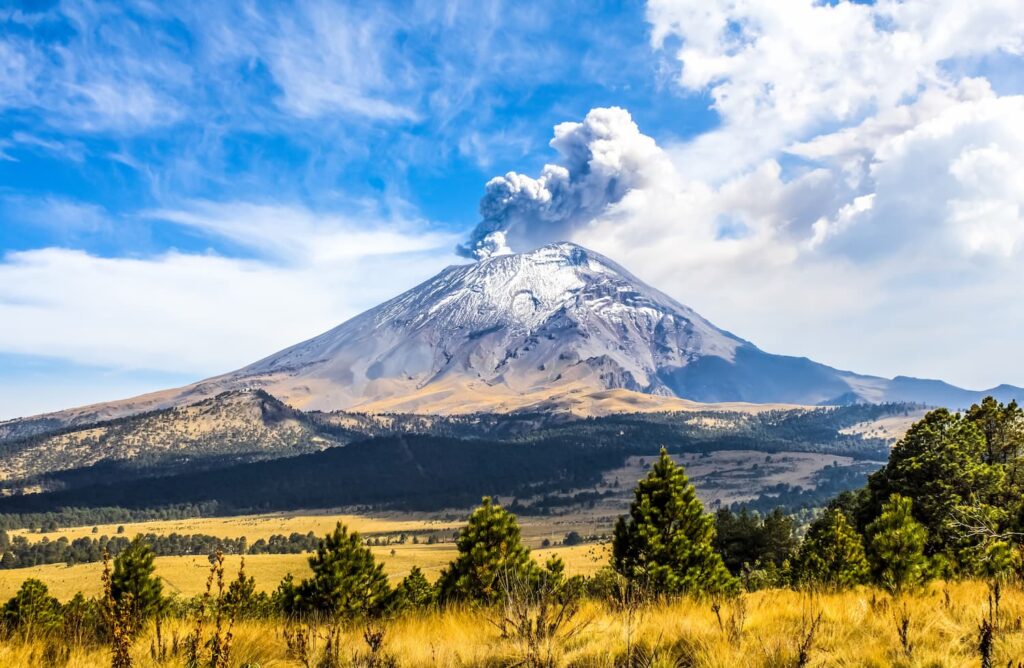
We think that the cool but sunny days of winter are a great time to visit Mexico City. There is an average of 11-12 hours of sunlight each day in winter, so December, January or February can be a great time to visit Mexico City if you want to pack in lots of sightseeing.
Due to the fact that it is winter, there are fewer tourists visiting the city, so attractions are less crowded, and you can find some great travel deals.
Plus, if you want to see snow in Mexico City, it is not far to travel to the surrounding mountains for your snow fix.
What Month Is The Coldest In Mexico City?
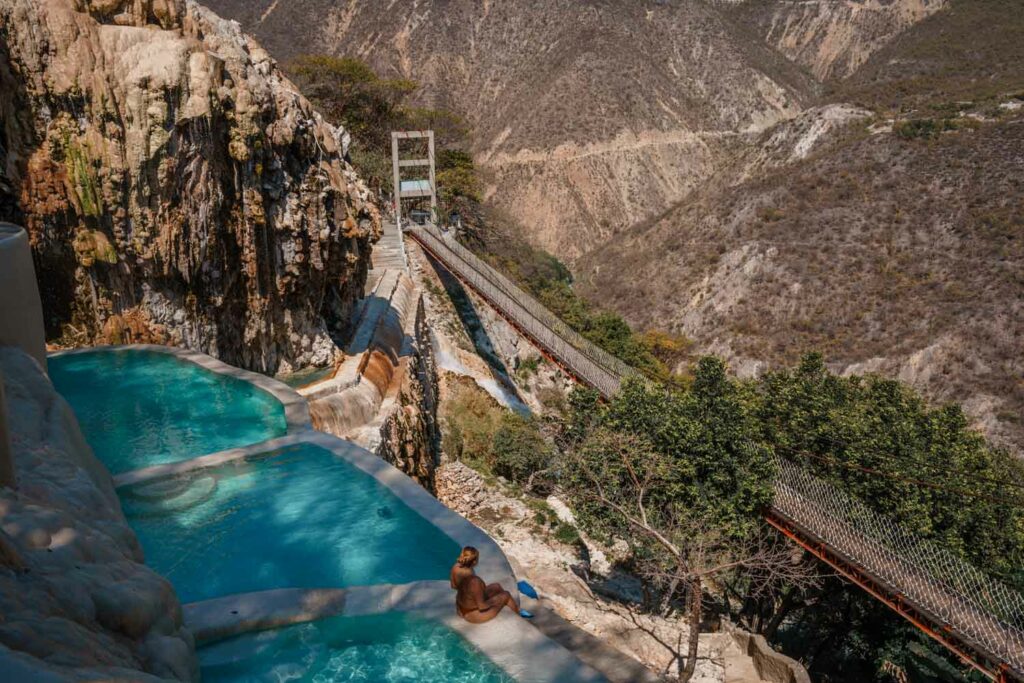
Are you wondering what is the coldest month in Mexico City to avoid for your trip?
Well, if you assess the average Mexico City temperature month by month, January is one of the coldest months in Mexico City – but it is still not cold compared to European or U.S. temperatures in winter.
Don’t dismiss visiting during Mexico City coldest months. January rarely sees daytime freezing temperatures, and it is even rarer to see snow in Mexico City in January.
On our last January stay in CDMX, we often wore short sleeves and shorts during the day! So, you can imagine that it feels like spring in Mexico City, even in January!
When Is It Rainy Season In Mexico City?
The rainy season in Mexico City runs from May to September. July is the wettest month, with an average of 9 inches of rainfall.
It does not rain all day, every day during the rainy season. Instead, you can expect heavy, short showers usually in the afternoons or evenings. This ‘raining on schedule’ makes it relatively easy for visitors to plan their sightseeing around the rain showers.
However, very heavy downpours can sometimes cause disruption to local traffic and public transport. We advise always checking the weather forecast before you head out for the day and planning your travel and sightseeing accordingly.
There are also some unexpected advantages to travelling to Mexico City during the rainy season.
The rain lowers the daily temperature in summer, which can hit a stifling 26 C / 80 F. It also improves the city’s notoriously poor air quality. Plus, consistent rain showers turn the environment in and around the city into a lush green tropical landscape.
Furthermore, many travellers are put off visiting Mexico City during the rainy season, so you will experience fewer crowds at attractions and can enjoy lower prices in hotels.
What Month Is The Hottest In Mexico City?
April and May are the hottest months in Mexico City. Temperatures peak around 26 C / 80 F, though the concrete urban jungle surrounding you can make these temperatures feel much hotter.
Does Mexico City Get Cold At Night?
Mexico City does not get cold at night in the summer months.
However, winter nights in Mexico City can be very cold. Although the daytime temperatures are pleasant, the clear winter skies mean the temperature plummets as soon as the sun sets.
The average nighttime temperature in winter is just 1-2 C / 35 F. So if you are planning to visit in winter, make sure you pack some extra layers to throw on at night.
It is also worth bearing in mind that very few buildings in Mexico City have central heating, so you can feel cold even if you stay inside. Pack some warm socks, and some jumpers if you choose to visit Mexico City in winter.
What Is The Best Time To Visit Mexico City?
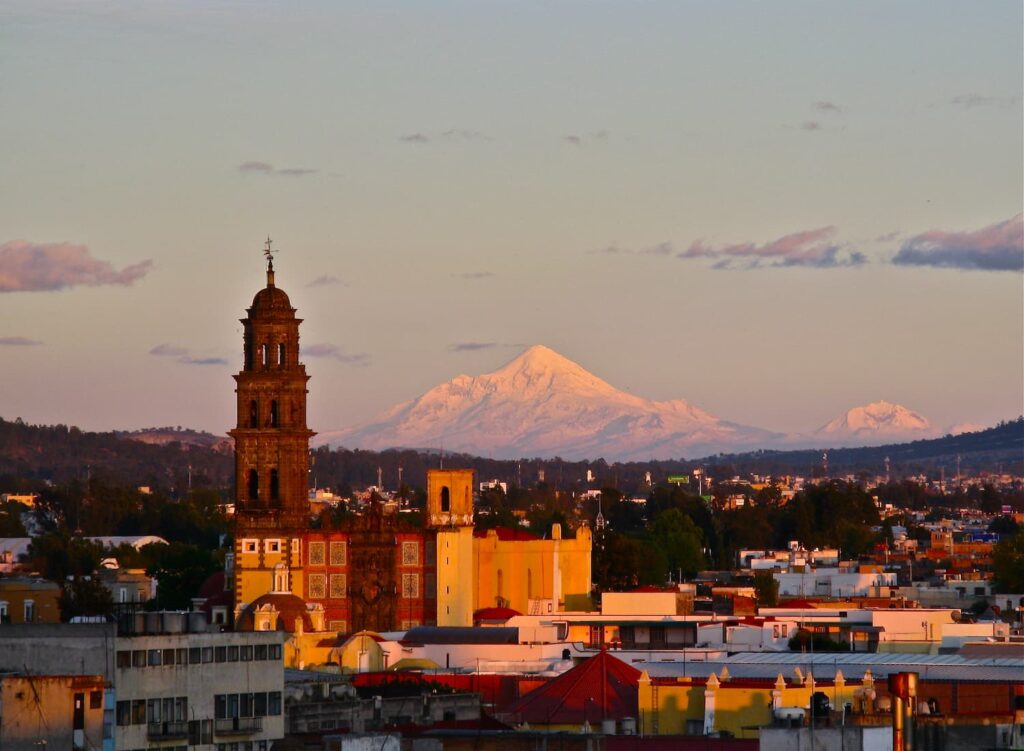
Due to its year-round temperate climate, we think any time is a good time to visit Mexico City. However, if we had to pick the best time to visit based on our own experience, we would advise visiting between November and April.
March and April miss the coldest days and nights of winter but are also outside the rainy season, so you will experience warm days with cool – but not cold – nights. You will enjoy consistent dry days with long sunlight hours. It doesn’t get much more perfect for a sightseeing vacation!
We also love the spring colours in Mexico City. The purple jacaranda and pink bougainvillaea add colour to an already colourful city.
Another great time to visit Mexico City is at the end of October and the beginning of November, when the vibrant Dia de los Muertos (Day of the Dead) celebration takes place. This deeply rooted cultural event is a mesmerizing blend of tradition, colour, and festivity, providing travellers with a unique and unforgettable experience.
What Is The Worst Time To Visit Mexico City?

We don’t think there is a ‘worst time’ to visit Mexico City as the city’s temperatures are pleasant all year round. Mexico City is a year-round destination with something in every season for every traveller. When you choose to visit depends on your travel style and preferences as well as your budget.
Personally, we love the warm, dry days and varied colours of Spring. Easter is also a fun time to visit Mexico City. But we also enjoy the relief that rainy days in Mexico City during the summer months bring to both the high temperatures and the poor air quality.
Autumn is warm and dry, and Mexico City comes alive with some of the biggest festivals of the year, particularly the spectacular Day of the Dead festival at the end of October / early November.
Winter is cool but sunny, and the city experiences fewer crowds, resulting in good travel bargains for budget-conscious travellers.
To be honest, we can’t pick the worst time to visit Mexico City. Just try to pick the best time for you.
Where Does It Snow In Mexico?
If you are disappointed to find out that there won’t be snow in Mexico City during your visit, you may be wondering where does it snow in Mexico that you can visit to experience ‘the white stuff’.
The following places are our top recommendations for seeing snow in Mexico.
📍Nevado de Toluca

Nevado de Toluca is an extinct volcano around 80 km / 50 miles west of Mexico City near Toluca city. It is a popular hiking spot for locals as well as tourists and is an easy day trip from the capital by a rental car or by public bus.
Nevado de Toluca (or Xinantécatl) is Mexico’s fourth-highest mountain and sits in a national park. The highest peak on the volcano, Pico del Fraille, tops 4,680 metres / 15,354 ft. As a result of this high altitude, you can expect to see snow most of the year in the park.
After leaving the main Mexico City – Toluca highway, you must drive for 9 miles / 15 km along a bumpy gravel road to reach the National Park entrance. It is doable without a 4-wheel drive but should not be attempted in bad weather.
The road continually winds upwards until it reaches a car park at over 4000 metres. From here, you must follow the marked trail to reach the crater and its two crater lakes.
More technical trails to the various summits of the volcano should only be attempted by experienced climbers with appropriate equipment or as part of an organised tour.
📍Pico de Orizaba (Citlaltépetl)
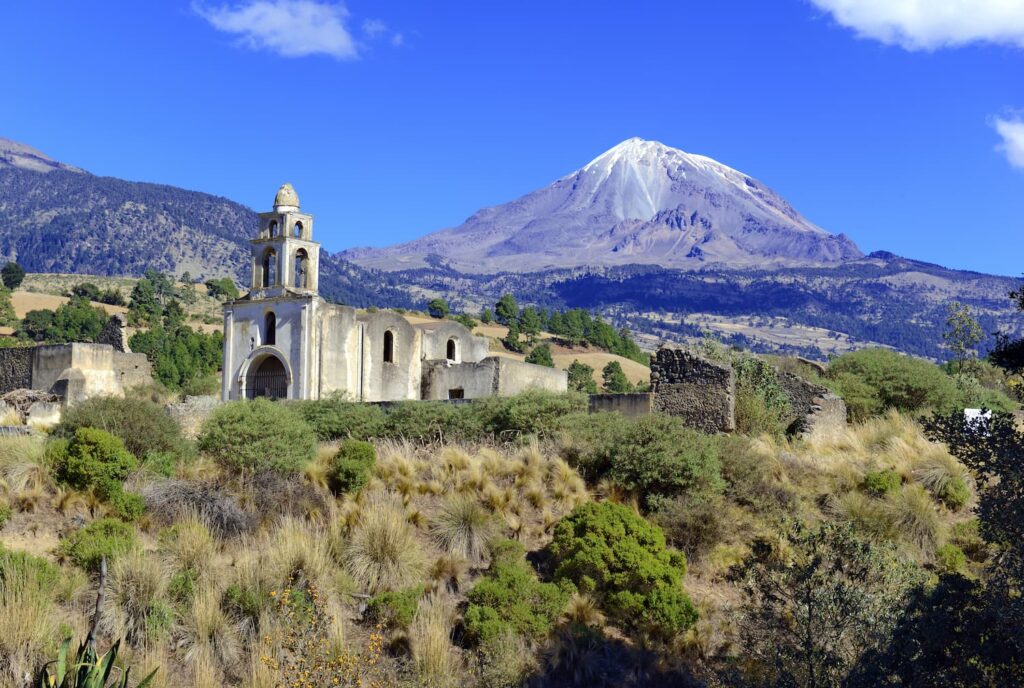
If you are disappointed not to see snow in Mexico City, head to Pico de Orizaba (meaning ‘the one that illuminates’). It is Mexico’s highest mountain and is a dormant – but active – volcano which lies 298 km / 185 miles east of Mexico City.
The volcano is the third-highest mountain in North America, peaking at
5,636 metres / 18,491 ft. It is also one of the only volcanoes in Mexico that supports a glacier, the Gran Glacier Norte.
Climbing this mountain requires 2 – 3 days, technical skill and specialist equipment and should only be attempted by experienced climbers, ideally as part of a guided trip. Due to the high altitudes involved, it should also be avoided by anyone prone to altitude sickness.
📍Real de Catorce

Real de Catorce (or Real for short) is 463 km / 288 miles north of Mexico City. The small town was once a silver mining settlement but is now a popular pilgrimage site. It is also a designated ‘magical town’ based on its historic and cultural heritage.
Real sits on one of the highest plateaus in Mexico, surrounded by the mountains of the Sierra Madre Oriental. As Real sits at an altitude of 2,743 m / 9,000 ft, there is a good chance you will experience snow here.
It can be a challenging journey to reach Real. After leaving the main highway, you must drive on a bumpy, endlessly climbing 27 km long cobblestone road followed by a 2.5 km one-way tunnel to reach Real.
Visiting picturesque Real feels like stepping back in time, and your arduous journey will be rewarded with stunning views of the surrounding area and mountains. You can tour mine ruins, the Pueblo Fantasma (ghost town) or the Church of the Immaculate Conception, known for its venerated statue of St Francis of Assisi.
📍Copper Canyon (Barrancas del Cobre)
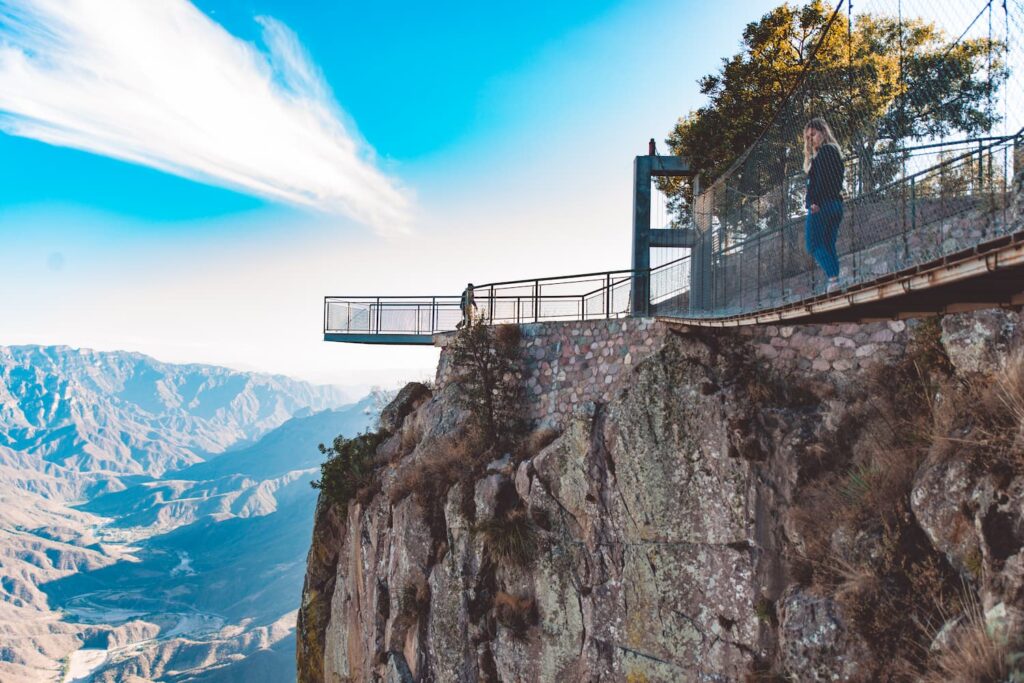
The Copper Canyon in northwest Mexico is over 1,700 km / 1,100 miles from Mexico City. It consists of six different canyons (formed by six different rivers) in the Sierra Madre Occidental and collectively covers over 65,00 sq km of land. The Copper Canyon is longer and deeper than the better-known Grand Canyon in the United States.
Visitors can explore this area on foot, by bike or on guided jeep tours, but we think one of the best ways to experience the size and scale of the Copper Canyon is to travel on ‘El Chepe’ or the Ferrocarril Chihuahua al Pacifico railway.
This 625 km / 388-mile rail line runs between Chihuahua and Los Mochis and incorporates 39 bridges and 86 tunnels. There really is no better way to appreciate the scenery and diversity of this incredible canyon fully.
If you choose not to get off the train en route, the entire journey will take around 15 hours to complete.
Like snow in Mexico City, snow in the Copper Canyon is rare, but your best chance of seeing snow here is during the rainy month of July.
📍Monterreal

One place you will definitely see snow in Mexico is in Monterreal, the only commercial ski resort in Mexico. The resort is in Arteaga, 90 minutes by car from Monterrey and over 804 km / 500 miles north of Mexico City.
Real snow in winter is replaced by plastic ski runs in summer. Visitors can also go horseback riding, cycling and ATV driving or enjoy toboggan runs or a spa treatment, so the resort is a good option if you want to do more than just ski. The 3,000-acre alpine site is also home to Mexico’s highest golf course.
We think the beautiful Bosques de Monterreal is one of Mexico’s lesser-visited gems.
Does It Snow In Mexico City: Conclusion
Although it is highly unlikely that you will experience snow in Mexico City on a winter trip to the capital, we hope that this article has shown you that winter is still a fantastic time of year to visit Mexico City.
Plus, if snow is one of your must-have Mexican experiences, we hope that we have helped you plan an itinerary to other, lesser-known Mexican locations where you can enjoy a sprinkling of snow.
If you visited Mexico in winter, we would love to hear if it snowed in Mexico City during your trip!
MORE CDMX TRAVEL GUIDES:

